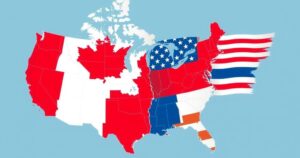Trump Administration Offers Buyout to Federal Workers Incentivising Resignation
- Trump administration offers a buyout to about 2 million federal workers.
- Eligible employees can receive pay until September with early resignation.
- The anticipated resignation rate could save taxpayers roughly $100 billion.
Federal Workers Offered Deferred Resignation Incentive
Trump administration takes a bold step by offering a buyout to approximately 2 million federal employees, enabling them to opt for a ‘deferred resignation.’ This means workers can agree to resign now while still receiving their salaries until September. The administration estimates that 5% to 10% of federal workers might take advantage of this offer, potentially equating to around $100 billion in savings for taxpayers.
Eligibility and Administration’s Justification for Buyouts
Eligibility for the buyout extends to all full-time federal employees, with notable exceptions like military staff and certain national security positions. According to White House press secretary Karoline Leavitt, taxpayers deserve dedicated employees who engage in their duties. She emphasized that those unwilling to work in their offices are free to find other paths, stating there’s a generous payout of eight months available for resignations under this new program.
AFGE Condemns Program Amid Comparisons to Tech Trends
The scheme has sparked reactions, especially from the American Federation of Government Employees (AFGE). Their president, Everett Kelley, criticized the program, claiming it should not be dismissed as a voluntary option, warning that it could disrupt essential government services relied upon by many citizens. Notably, the email communication sent out has drawn comparisons to an approach taken by tech mogul Elon Musk during his initial days at Twitter, suggesting a broader trend in management styles from both leaders, though the White House remains silent on any direct involvement from Musk.
In summary, the Trump administration’s offer of a buyout to federal workers aims for significant savings, yet faces criticism from unions concerned about its implications. The initiative, framed as voluntary, raises questions about its actual impact on essential government functions. As responses pour in, the wider ramifications of this program remain to be seen.




